Since I began studying, I was taught that when analysing a circuit using multiple sources, independent sources could be turned off, meaning that I could transform a voltage source into a short, and a current source into an open circuit and analyze the circuit by how each individual source acts on it.
However, regarding dependent sources, every electric circuits book I've read says the same thing:
"Dependent sources should never turn off when using the superposition principle analysis, they should be left intact since they are controlled by variables somewhere in the circuit".
However recently I've noticed that I can get the same results if I treat the dependent source as a regular independent source. Ive simulated this, compared to the end-of-chapter problem solutions and it all turns out the same. Take the following problem from Alexander/Sadiku's Book as an example, which states:
"Find Vx using the superposition principle"
simulate this circuit – Schematic created using CircuitLab
Normally I would leave the dependent source on, turn off the 4A current source and find Vx1, then I would turn off the 6A current source and find Vx2, add them up and find Vx.
However, if I treat the dependent current source as an independent current source, I get the same results, Here's the procedure I followed:
Turning off both current sources:
Finding Vx using Ohm's law results in:
$$Vx1 = -(4Ix / 10) * 8$$ $$Vx1 = -3.2Ix$$
Now I shut down all sources (including the dependent voltage source like if it were an independent source) and leave the 6A source on:
Using the current divider formula and multiplying by 8 I get Vx2
so:
$$Vx2 = (2 / 10) * 6 * 8 = 9.6V$$
Finally, I turn off all sources but the 4A current source:
Using the same procedure as above, by current divider I find Vx3:
$$Vx3 = (2 / 10) * 4 * 8 = 6.4V$$
Finally, the total voltage Vx is the sum of each individual voltage Vx (Vx1, Vx2, Vx3):
$$Vx = Vx1 + Vx2 + Vx3 = -3.2Ix + 9.6 + 6.4$$
I can find Ix by Kirchhoff's Current Law, the currents in the top node of the circuit are:
$$Ix + Vx/8 = 6 + 4$$
Solving for Ix
$$Ix = 6 + 4 - Vx/8$$
Using the above equation to eliminate Ix from Vx:
$$Vx = -3.2(6 + 4 - Vx / 8) + 9.6 + 6.4$$
Solving for Vx:
$$Vx = -26.667V$$
And this is the simulation I made on Multisim:
So my question is: What is going on? Why is it "prohibited" to treat dependent sources this way when the results are the same?
